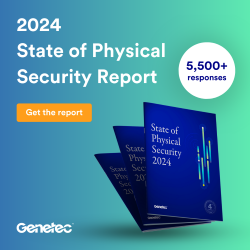The best ways to strengthen access control on campus
More college and university campuses are choosing to upgrade their access control systems in 2023. Find out how a modern access control solution delivers a host of new features that will help your school maximize the investment for years to come.

Access control technology has evolved a lot over the last decade. And so have the needs of colleges and universities.
It’s not enough to secure doors and buildings. Today’s higher education security professionals are looking for ways to streamline the flow of people across campuses, gain better control over cardholder management, and become more adaptable to changing health mandates.
They’re also thinking more about how their legacy access control could be exposing their school to cybersecurity risks. And what tools are available to better protect student and staff privacy.
Check out our portfolio of tailored solutions designed just for higher education.
Higher education is ready for modern access control
In a recent survey 67% of organization stated they want to invest in access control technology this year.
For colleges and universities specifically, the COVID pandemic highlighted the limitations of their legacy access control systems. While many tried to adapt to new health mandates, the technologies they once relied on to keep facilities secure weren’t designed to address these new challenges.
Having many disjointed and proprietary systems across facilities made it impossible to accurately track occupancy levels and remotely manage door schedules and cardholder rights. Older proximity cards and readers not only created health concerns but also increased cybersecurity risks.
Moving into a post-covid world, many higher education security teams and facilities managers are ready to make the move to newer access control technology. On one hand, they want to become more adaptable to changing health mandates. But more than that, they want to increase operational efficiencies, stay open to newer access control innovations, and find interesting ways to use data to enhance campus life.
Choosing an open and scalable access control system is critical
Here’s the good news for campuses and universities: upgrading to newer access control systems doesn’t have to happen all at once. When you select an open-architecture access control system, you’ll be able to keep some existing technologies and phase in new devices, readers, or card technologies over time.
This means your team gets access to newer tools and functionality within the software and you’re able to spread out the upgrade costs over a few years. Following that, you can then think about adding mobile credentials, biometrics, and touchless readers to reduce touchpoints on campus and make it easier for everyone to move around safely.
In a recent Q&A with Matt Isgur from MIT, he shared the following about a recent access control migration: “One of the most enticing factors to moving to Genetec was that the Synergis™ access control system is not proprietary. This meant we could choose open-standard Mercury access control hardware, and worst-case scenario, we could always switch out the head-end platform without going through another full rip and replace. This decreased the risk involved with such a large and significant change.”
Choosing a highly-scalable system is equally important because it allows you to convert one system, facility, or campus at a time. You can also pilot new solutions before full-scale deployment and have greater confidence in your system over the long haul. That’s because you’ll know it can accommodate your growth from hundreds to thousands of devices and cardholders.
Thinking about migrating to IP access control? You’ll want to download this 10-step checklist
Boost efficiencies with a smarter physical access management solution
Once you’ve modernized the foundation of your access control system, you can start looking at other ways to enhance your processes. For example, investing in a smarter physical access management solution such as ClearID™ can help you streamline workflows and automate your access control requests.
Instead of manually enrolling new cardholders, the ClearID system will automatically assign access rights based on roles, attributes, departments, or specific school policies. This frees up a lot of time for operators and minimizes human error. If policies change, operators can simply update privileges, so that it’s applied across all associated cardholders.
The solution also simplifies the management of one-off access requests from staff, students, or visitors. Instead of someone having to check in on specific building or faculty policies or get area manager approvals for random access requests, ClearID automates the entire workflow.
For instance, if a professor invites a guest lecturer to class, they can use a web-based app to request temporary building access on their behalf. The assigned facility manager will be automatically alerted to the request, and from there, they can either approve, deny, or make edits to specific privileges before granting the temporary access rights. By specifying a start and end time for visitor access, the ClearID application will automatically activate and de-activate the cardholder rights. All user activity is also logged, which further strengthens security and accountability.
ClearID is simply the smarter way to manage access control across campuses. It helps reduce workloads and enhance compliance in an environment where the massive number of facilities, cardholders, door rules, and temporary access requests can become overwhelming to manage.
Gain valuable data and insights with people counting and occupancy tools
When you modernize your access control system, you open yourself up to other cutting-edge innovations. For many colleges and universities, tools such as people counting analytics and occupancy management solutions add tremendous value to their operations.
With these solutions, you can keep track of occupancy levels across buildings and areas to adhere to fire and safety protocols or evolving health mandates. You can also either monitor occupancy levels in real-time or set thresholds for certain areas such as the cafeteria or gym. If the number of people nears the threshold limit, your team will be notified so they can quickly restrict access to abide by regulations.
Occupancy management tools also give you lots of valuable data about how your facilities are being used. This can help inform decisions for further expansions or give your team ideas about how to make better use of spaces to enhance campus life.
Enhance cybersecurity and privacy when you upgrade your access control
If you’re still wondering whether it’s time to upgrade your access control system on campus, consider this: in a recent survey of over 3,700 security professionals, 40% of respondents said they are focusing their cybersecurity efforts on their access control deployment.
 That’s because legacy technology from credentials and controllers to servers and workstations poses a higher risk to your organization. Older equipment often lacks the top must-haves to defend against cyber attacks: end-to-end encryption, multi-factor authentication, and advanced authorization methods.
That’s because legacy technology from credentials and controllers to servers and workstations poses a higher risk to your organization. Older equipment often lacks the top must-haves to defend against cyber attacks: end-to-end encryption, multi-factor authentication, and advanced authorization methods.
Upgrading your access control tech stack is a sure way to enhance your cyber resilience. Modern access control solutions give you access to the latest cybersecurity features and a host of other built-in tools to track your system’s health and performance.
Choosing solutions built with data protection and privacy in mind takes you a step further. These are engineered by vendors who prioritize cybersecurity and privacy in the development of their products.
That means these vendors not only adhere to cybersecurity best practices in everything they do, but they make sure you have access to the latest features to ensure data and privacy protection. These can include automatically blurring identities in the footage when using cameras to track occupancy or alerting operators to vulnerabilities such as devices falling offline.
In a world where cybercrime and privacy concerns continue to rise, having the best tools at your disposal give you more control over your environment. This ultimately helps students and staff feel safe as they move from classrooms to dorms and cafeterias on campus.
